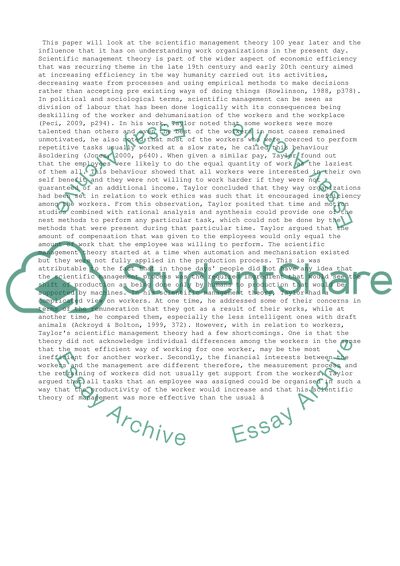Cite this document
(“It is over 100 years since The Principles of Scientific Management was Essay”, n.d.)
It is over 100 years since The Principles of Scientific Management was Essay. Retrieved from https://studentshare.org/management/1488746-it-is-over
It is over 100 years since The Principles of Scientific Management was Essay. Retrieved from https://studentshare.org/management/1488746-it-is-over
(It Is over 100 Years since The Principles of Scientific Management Was Essay)
It Is over 100 Years since The Principles of Scientific Management Was Essay. https://studentshare.org/management/1488746-it-is-over.
It Is over 100 Years since The Principles of Scientific Management Was Essay. https://studentshare.org/management/1488746-it-is-over.
“It Is over 100 Years since The Principles of Scientific Management Was Essay”, n.d. https://studentshare.org/management/1488746-it-is-over.


